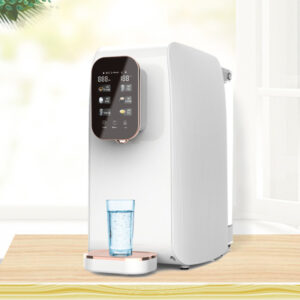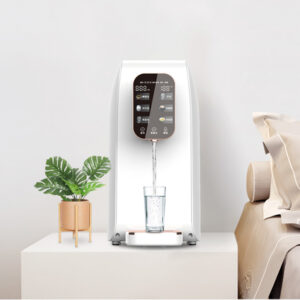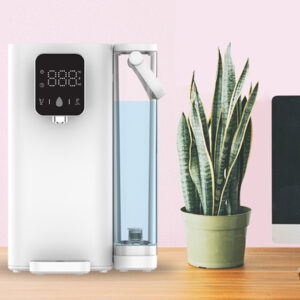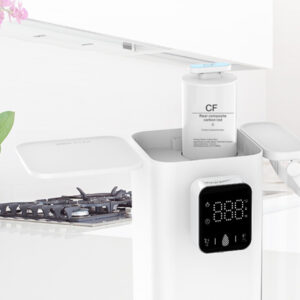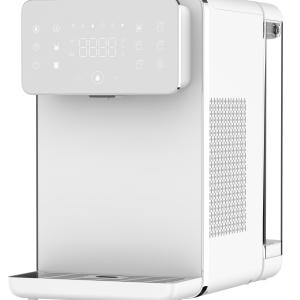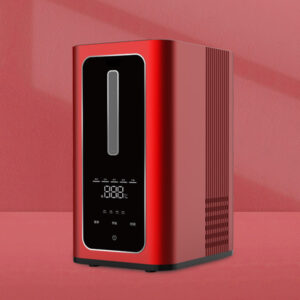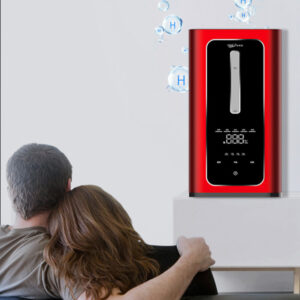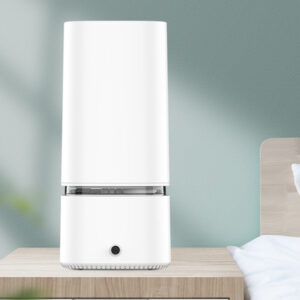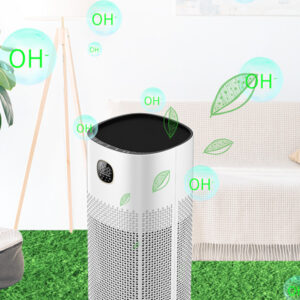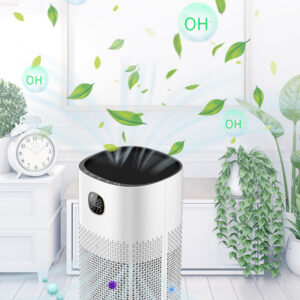Portable Hydrogen Inhalation Therapy Machine: Benefits and Side Effects
Portable Hydrogen Inhalation Therapy Machine: Benefits and Side Effects
Introduction
Hydrogen inhalation therapy involves the administration of molecular hydrogen (H₂) gas, a colorless, odorless, and non-toxic molecule, directly into the respiratory system for therapeutic purposes. This emerging modality has gained traction in recent years due to its potential as a selective antioxidant and anti-inflammatory agent. Unlike traditional antioxidants that may indiscriminately neutralize reactive oxygen species (ROS), molecular hydrogen targets highly cytotoxic radicals such as hydroxyl radicals (•OH) and peroxynitrite (ONOO⁻), while sparing beneficial ROS involved in cellular signaling. The therapy’s roots trace back to 2007 when Ohsawa et al. demonstrated H₂’s protective effects against oxidative stress in a rat model of cerebral infarction, sparking a wave of preclinical and clinical investigations.
Portable hydrogen inhalation machines represent a significant advancement in making this therapy accessible beyond clinical settings. These devices typically use electrolysis of water to generate high-purity H₂ gas, often mixed with oxygen or air for safe delivery. Weighing as little as 1.5-2.2 kg, they are designed for home use, offering flow rates from 120 to 600 mL/min and hydrogen purity exceeding 99.99%. This portability addresses the limitations of stationary systems, enabling daily sessions for chronic conditions. The global market for such machines is expanding, driven by increasing awareness of oxidative stress-related diseases like cardiovascular disorders, neurodegenerative conditions, and metabolic syndromes.
Interest in hydrogen therapy has surged with over 81 clinical trials and 64 scientific publications on human outcomes as of 2023, covering applications from acute ischemia-reperfusion injury to chronic inflammatory states. Recent reviews highlight its potential in ameliorating diseases tied to oxidative imbalance, such as obesity, diabetes, and pulmonary hypertension. However, while benefits are promising, rigorous evaluation of side effects is essential, particularly for portable devices used without medical supervision. This article delves into the technical aspects, mechanisms, benefits, and potential risks of portable hydrogen inhalation therapy machines, drawing on current scientific evidence to provide a balanced technical overview.
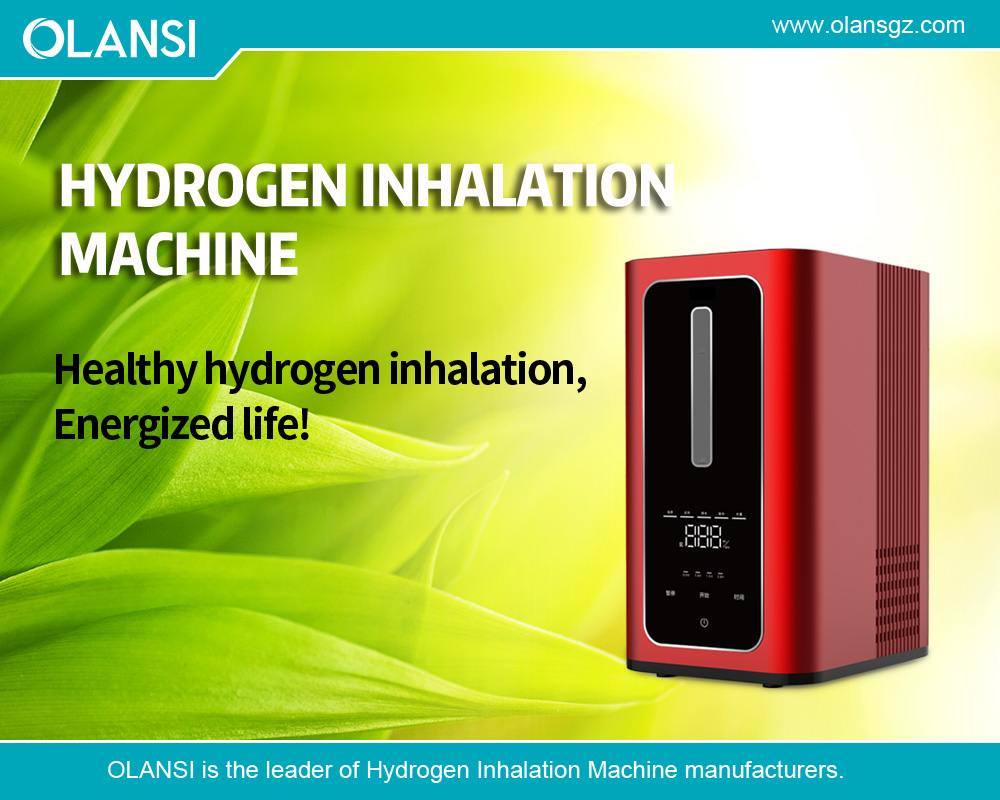
Mechanism of Action
At the molecular level, hydrogen’s therapeutic efficacy stems from its unique physicochemical properties. As the smallest molecule, H₂ diffuses rapidly across cell membranes, including the blood-brain barrier, reaching subcellular compartments like mitochondria and nuclei where oxidative damage often originates. Its primary mechanism is the selective scavenging of •OH radicals, which are generated during water radiolysis or mitochondrial electron transport chain leaks. The reaction is straightforward: H₂ + •OH → H₂O + H•, converting the radical into water without producing harmful byproducts.
Beyond direct antioxidation, H₂ modulates cellular signaling pathways. It activates the Nrf2-Keap1 pathway, a master regulator of antioxidant responses, upregulating genes for enzymes like superoxide dismutase (SOD), catalase (CAT), and glutathione peroxidase (GPx). This enhances endogenous antioxidant capacity, reducing lipid peroxidation and DNA damage markers such as 8-hydroxy-2′-deoxyguanosine (8-OHdG). In inflammatory contexts, H₂ inhibits NF-κB translocation, suppressing pro-inflammatory cytokines like TNF-α, IL-1β, and IL-6, while promoting anti-inflammatory ones like IL-10. Studies in allergic asthma models show H₂ inhalation attenuates airway inflammation by balancing Th1/Th2 responses and reducing eosinophil infiltration.
In terms of delivery via portable machines, H₂ is typically generated through proton exchange membrane (PEM) electrolysis, ensuring purity above 99.996% to avoid contaminants like chlorine or ozone. The gas is inhaled via nasal cannulas or masks at concentrations of 1-4% (below the 4.3% flammability threshold in air) to prevent explosion risks. Pharmacokinetics reveal rapid absorption: inhaled H₂ reaches peak blood concentrations within minutes, with half-life around 30-60 minutes, necessitating repeated sessions for sustained effects. In ischemia-reperfusion models, such as post-cardiac arrest, H₂ reduces mitochondrial swelling and cytochrome c release, preserving ATP production and preventing apoptosis.
Furthermore, H₂ influences autophagy and apoptosis pathways. It upregulates LC3-II and Beclin-1, promoting autophagosome formation to clear damaged organelles, while downregulating Bax/Bcl-2 ratios to inhibit programmed cell death. In metabolic disorders, H₂ ameliorates insulin resistance by activating AMPK and PPARγ, improving glucose uptake in skeletal muscle and adipose tissue. Recent 2025 studies suggest nanoplatforms could enhance delivery, but portable inhalation remains the most practical for widespread use. These mechanisms underscore H₂’s “democratic” therapeutic potential, applicable across diverse pathologies without apparent toxicity at therapeutic doses.
Technical Specifications of Portable Machines
Portable hydrogen inhalation machines are engineered for user-friendly, safe, and efficient H₂ delivery. Core components include a water tank (typically 2-2.5 L capacity, requiring distilled or pure water), PEM electrolyzer, gas separator, and delivery system. High-end models like the H2RICH or H2yunshen achieve hydrogen purity of 99.9995-99.996%, with flow rates adjustable from 120 mL/min for basic therapy to 600 mL/min for intensive sessions. Power consumption ranges from 150-360 W, enabling battery-operated portability for up to 4-6 hours.
Safety features are paramount: overheat protection, low-water alarms, automatic shutoff, and hydrogen leakage detectors mitigate risks. Explosion hazards are minimized by maintaining H₂ concentrations below 4%, often blended with oxygen (e.g., 67% H₂ + 33% O₂ in some modes) to enhance tolerability. Devices like the Mini Hydrogen Inhaler SPE120 weigh 2.2 kg, making them ideal for travel, while clinical-grade models incorporate real-time purity monitoring via sensors.
Technical performance metrics include hydrogen output stability (±5% variance), noise levels (<50 dB), and durability (up to 5000 hours of electrolysis membrane life). Advanced units integrate timers, voice prompts, and app connectivity for session tracking. Compliance with standards like CE or FDA Class II ensures medical-grade reliability. For therapeutic efficacy, flow rates above 300 mL/min are recommended for systemic effects, as lower rates may limit tissue saturation. Overall, these specifications balance efficacy, safety, and convenience, positioning portable machines as viable tools for adjunctive therapy.
Benefits
The benefits of portable hydrogen inhalation therapy span multiple organ systems, primarily through mitigation of oxidative stress and inflammation. In cardiovascular health, H₂ inhalation improves outcomes in ischemia-reperfusion injuries. Clinical trials show reduced infarct size in acute myocardial infarction patients, with enhanced left ventricular function post-percutaneous intervention. In hypertensive models, daily 1-hour sessions lower blood pressure by modulating autonomic balance, suppressing sympathetic overactivity, and augmenting parasympathetic tone. For chronic conditions like atherosclerosis, H₂ reduces endothelial dysfunction by inhibiting LDL oxidation and plaque formation.
Neurologically, H₂ exhibits neuroprotective effects. In post-cardiac arrest syndrome, inhalation enhances survival rates and neurological scores by diminishing brain IRI. Parkinson’s disease studies indicate mild improvements in motor symptoms via antioxidation, though larger trials are needed. A 2025 review emphasizes H₂’s role in modulating neuroinflammation in neurodegenerative disorders like Alzheimer’s, where it reduces amyloid-beta-induced oxidative damage. Portable machines facilitate daily use, potentially slowing disease progression.
Respiratory benefits are notable in chronic obstructive pulmonary disease (COPD) and asthma. H₂ inhalation protects lung tissue, improving forced expiratory volume and reducing exacerbations by alleviating oxidative burden. In bleomycin-induced fibrosis models, repeated sessions enhance lung compliance and reduce elastance by shifting macrophage polarization toward anti-fibrotic M2 phenotypes. For COVID-19 sequelae, H₂ may suppress cytokine storms, though evidence is preliminary.
In metabolic syndromes, H₂ improves glycemic control and insulin sensitivity. A real-world study in type 2 diabetes patients showed reduced HbA1c, weight, and insulin doses after regular inhalation. It also ameliorates dyslipidemia by enhancing lipid metabolism and β-cell function.
Athletic performance and recovery benefit from H₂’s anti-fatigue effects. It reduces lactate buildup, shortens recovery times, and boosts energy by protecting against exercise-induced oxidative stress. Portable devices allow pre- and post-workout sessions, enhancing endurance.
Oncological applications include mitigating radiotherapy side effects. Pilot studies in head and neck cancer show H₂ inhalation reduces dermatitis and pharyngitis during chemoradiotherapy by neutralizing radiation-induced ROS. In cisplatin toxicity, H₂ alleviates nephrotoxicity without compromising anti-cancer efficacy.
Other benefits include hearing preservation post-radiotherapy for nasopharyngeal carcinoma and improved quality of life after hepatectomy. Weight loss trials suggest H₂ enhances metabolic shifts during caloric restriction. Overall, portable machines democratize access, enabling consistent therapy for these multifaceted benefits.
Side Effects and Safety Profile
Hydrogen inhalation machine‘s safety profile is favorable, with no clinically significant adverse effects reported in healthy adults exposed to 2.4% H₂ for up to 72 hours. Vital signs, pulmonary function, neurological exams, and serologic markers remain stable, with only minor, non-significant changes like slight hematocrit increases. In clinical settings, such as post-cardiac arrest or stroke, no direct attributions to H₂ for adverse events occur.
Potential risks stem from device mishandling rather than H₂ itself. At concentrations >4%, flammability poses explosion hazards, necessitating safety features in portable machines. High-flow inhalation may cause mild immunosuppression in healthy individuals, but this is reversible and not observed in diseased states. Rare reports include transient headaches or dizziness, likely due to rapid gas absorption rather than toxicity.
Contraindications are minimal; asthmatics may require monitoring, as H₂ could exacerbate sensitivity at high doses. No long-term side effects like organ damage or dependency are evident from trials up to 2025. Overall, benefits outweigh risks when used as directed.

Conclusion
Portable hydrogen inhalation therapy machines offer a promising, safe adjunct for managing oxidative stress-related conditions, with benefits in cardiovascular, neurological, and respiratory health. While side effects are negligible, adherence to safety protocols is crucial. Future research, including larger trials, will refine applications and optimize devices for broader adoption.
For more about portable hydrogen inhalation therapy machine benefits and side effects, you can pay a visit to Olansi at https://www.olansgz.com/product-category/hydrogen-inhalation-machine/ for more info.



